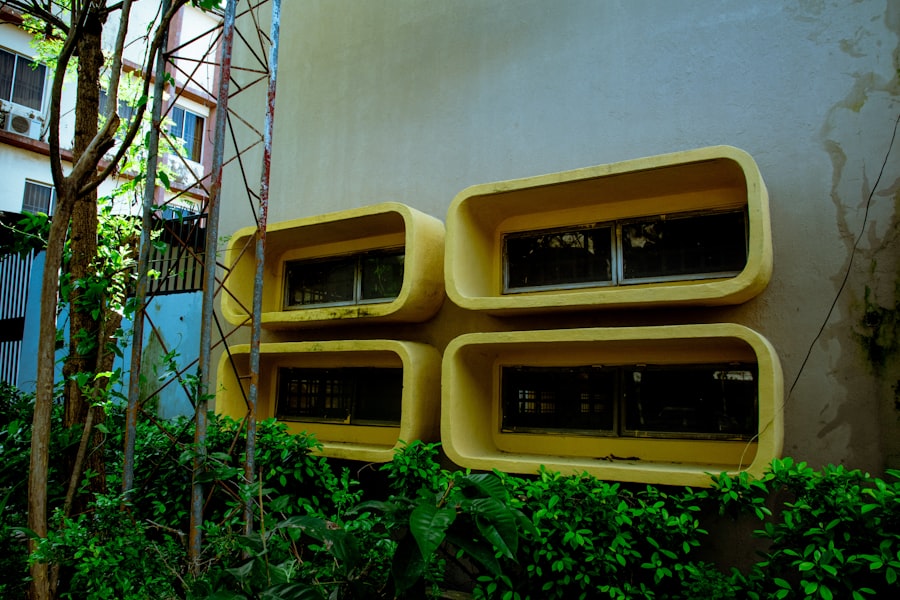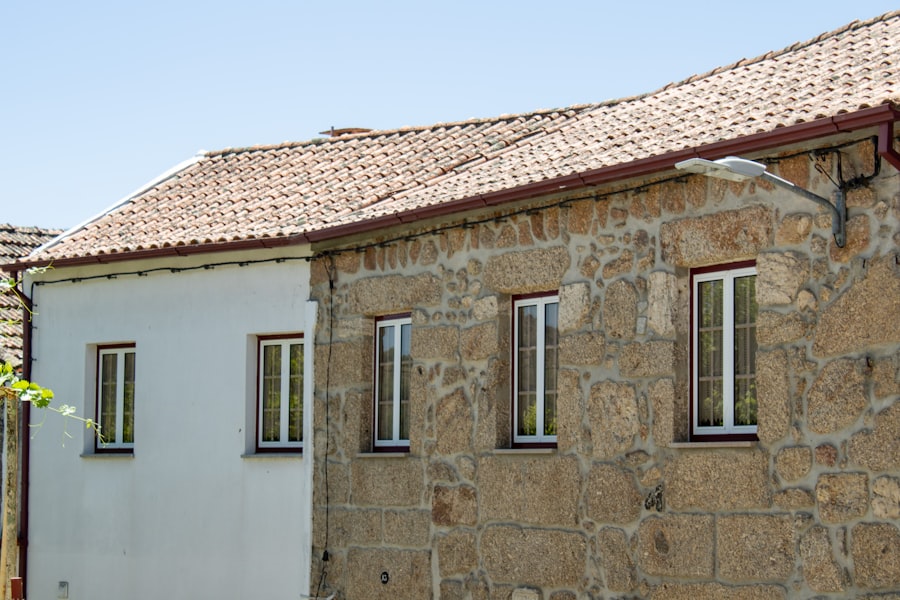In recent years, the housing market has witnessed a significant shift towards prefabricated homes, often referred to as prefab homes. This trend has emerged as a response to various challenges, including rising construction costs, labor shortages, and the increasing demand for sustainable living solutions. Prefabricated homes are constructed off-site in a factory setting and then transported to their final location for assembly.
This method not only streamlines the building process but also allows for greater control over quality and design. The appeal of prefab homes has grown as consumers seek more affordable and efficient housing options, leading to a renaissance in this age-old concept. The resurgence of interest in prefabricated homes can also be attributed to advancements in technology and design.
Modern prefab homes are no longer the simple, boxy structures of the past; they now encompass a wide range of architectural styles and innovative features. With the integration of smart home technology and energy-efficient materials, these homes are designed to meet the needs of contemporary living while minimizing their environmental impact. As urbanization continues to rise and land becomes scarcer, prefabricated homes offer a viable solution for those looking to build in densely populated areas or on challenging terrains.
Key Takeaways
- Prefabricated homes offer faster construction and increased affordability compared to traditional homes.
- Key benefits include energy efficiency, reduced waste, and customizable design options.
- Location and builder reputation are crucial when searching for prefabricated homes nearby.
- Important factors to consider include materials, size, design, and local building codes.
- Collaborating closely with a builder ensures your prefabricated home meets your specific needs and preferences.
Benefits of Prefabricated Homes
One of the most significant advantages of prefabricated homes is their cost-effectiveness. Traditional home construction often involves numerous delays and unexpected expenses due to weather conditions, labor shortages, and other unforeseen factors. In contrast, prefab homes are built in a controlled environment, which reduces the likelihood of such complications.
This efficiency translates into lower overall costs for buyers, making homeownership more accessible for many individuals and families. Additionally, the streamlined construction process means that homeowners can move into their new residences much faster than with conventional building methods. Another compelling benefit of prefabricated homes is their sustainability.
Many manufacturers prioritize eco-friendly materials and energy-efficient designs, which can significantly reduce a home’s carbon footprint. For instance, some prefab homes utilize recycled materials or sustainably sourced wood, while others incorporate solar panels and advanced insulation techniques to enhance energy efficiency. This focus on sustainability not only benefits the environment but can also lead to long-term savings on utility bills for homeowners.
As awareness of climate change grows, many buyers are increasingly drawn to the idea of living in a home that aligns with their values regarding environmental stewardship.
Finding Prefabricated Homes Near Me

For those interested in exploring prefabricated homes, the first step is often finding available options in their local area. A variety of resources can assist potential buyers in this search. Online platforms dedicated to real estate listings frequently feature sections specifically for prefab homes, allowing users to filter results based on location, price range, and desired features.
Websites such as Zillow or Realtor.com can be invaluable tools for discovering nearby prefabricated home communities or individual listings. In addition to online resources, local builders and manufacturers specializing in prefabricated homes can provide valuable insights and options. Many companies have showrooms or model homes that prospective buyers can visit to get a feel for the design and quality of the structures they offer.
Engaging with local real estate agents who have experience in the prefab market can also be beneficial; they can provide guidance on available properties and help navigate the purchasing process. Networking within community groups or forums focused on sustainable living or modern architecture may also yield leads on prefabricated homes nearby.
Factors to Consider When Choosing a Prefabricated Home
| Factor | Description | Importance Level | Considerations |
|---|---|---|---|
| Cost | Total expense including purchase, delivery, and installation | High | Compare quotes from multiple manufacturers; consider financing options |
| Customization Options | Ability to modify design, layout, and finishes | Medium | Check manufacturer flexibility and additional costs for custom features |
| Build Quality | Materials used and construction standards | High | Review certifications, warranties, and customer reviews |
| Energy Efficiency | Insulation, windows, and HVAC systems to reduce energy use | Medium | Look for energy ratings and green building certifications |
| Delivery Time | Time from order to installation completion | Medium | Confirm lead times and potential delays with manufacturer |
| Site Preparation | Requirements for foundation and land readiness | High | Assess site conditions and additional costs for preparation |
| Warranty and Support | Coverage for defects and post-installation assistance | High | Understand warranty terms and customer service availability |
| Resale Value | Potential market value of the home in the future | Low | Research local market trends and prefabricated home acceptance |
| Compliance with Local Codes | Adherence to building regulations and zoning laws | High | Verify manufacturer compliance and obtain necessary permits |
When selecting a prefabricated home, several critical factors should be taken into account to ensure that the final choice aligns with personal preferences and lifestyle needs. One of the primary considerations is the size and layout of the home. Buyers should assess their current and future space requirements, taking into account family size, lifestyle changes, and potential guests.
Prefab homes come in various sizes, from compact models ideal for singles or couples to larger designs suitable for families. Understanding how much space is necessary will help narrow down options effectively. Another essential factor is the design aesthetic of the home.
Prefabricated homes are available in an array of architectural styles, from modern minimalist designs to more traditional looks. Buyers should consider their personal taste and how well a particular style will fit within their chosen location. Additionally, it’s important to think about customization options; many manufacturers allow buyers to modify floor plans or select finishes that reflect their individual style.
This flexibility can make a significant difference in creating a space that feels uniquely theirs.
When evaluating the financial implications of purchasing a home, a cost comparison between prefabricated and traditional homes reveals some striking differences. Generally speaking, prefabricated homes tend to be more affordable than their traditionally built counterparts. The average cost per square foot for prefab homes is often lower due to reduced labor costs and shorter construction times.
For example, while traditional homes may range from $150 to $300 per square foot depending on location and materials used, prefab homes can often be found in the $100 to $200 per square foot range. However, it’s essential to consider additional costs that may arise during the purchasing process. While the base price of a prefabricated home may be lower, buyers should factor in expenses related to land acquisition, site preparation, transportation fees, and utility connections.
In some cases, these additional costs can offset the initial savings associated with choosing a prefab home. Conversely, traditional homes may come with established infrastructure and utilities already in place, which could make them more appealing despite their higher upfront costs.
Popular Prefabricated Home Designs
The variety of designs available in the realm of prefabricated homes is one of its most appealing aspects. Among the most popular styles are modern minimalist designs characterized by clean lines, open floor plans, and large windows that invite natural light into living spaces. These homes often emphasize functionality while maintaining an aesthetic that resonates with contemporary tastes.
The use of sustainable materials and energy-efficient technologies is also prevalent in modern designs, appealing to environmentally conscious buyers. Another favored design is the cottage-style prefab home, which evokes a sense of warmth and charm reminiscent of traditional rural architecture. These homes often feature pitched roofs, cozy porches, and inviting interiors that create a welcoming atmosphere.
Cottage-style prefabs can be particularly appealing for those looking for a vacation retreat or a serene primary residence away from urban hustle. Additionally, modular designs that allow for expansion or reconfiguration over time are gaining traction among buyers who value flexibility in their living spaces.
Tips for Customizing Your Prefabricated Home

Customizing a prefabricated home offers an exciting opportunity for homeowners to create a space that reflects their unique tastes and lifestyle needs. One effective approach is to start with a clear vision of what you want your home to achieve. Consider factors such as functionality, aesthetics, and future needs when brainstorming design elements.
Creating mood boards or collecting inspiration from various sources—such as magazines, websites, or social media platforms—can help clarify your preferences. When working with manufacturers or builders on customization options, communication is key. Be open about your ideas and desires while also being receptive to professional advice regarding feasibility and cost implications.
Many builders offer standard packages that include various upgrades; understanding these options can help streamline decision-making while ensuring that your vision remains intact. Additionally, consider incorporating sustainable features such as energy-efficient appliances or solar panels into your customization plans; these elements not only enhance your home’s functionality but also contribute positively to environmental conservation.
Working with a Builder for Your Prefabricated Home
Collaborating with a builder is an essential step in bringing your prefabricated home vision to life. Choosing the right builder involves thorough research; look for companies with a solid reputation in the industry and positive customer reviews. It’s advisable to ask for references from previous clients and visit completed projects if possible.
This firsthand experience can provide valuable insights into the builder’s craftsmanship and reliability. Once you’ve selected a builder, establishing clear lines of communication is crucial throughout the construction process. Regular check-ins can help ensure that your preferences are being met while allowing you to address any concerns promptly.
Discuss timelines upfront; understanding how long each phase of construction will take can help manage expectations and reduce stress during the building process. Additionally, don’t hesitate to ask questions about materials used or construction methods employed; an informed homeowner is better equipped to make decisions that align with their vision for their new home. In summary, prefabricated homes represent an innovative solution to modern housing challenges by offering affordability, sustainability, and customization options that appeal to a wide range of buyers.
As this trend continues to grow, it opens up new possibilities for individuals seeking efficient living spaces tailored to their unique lifestyles.



